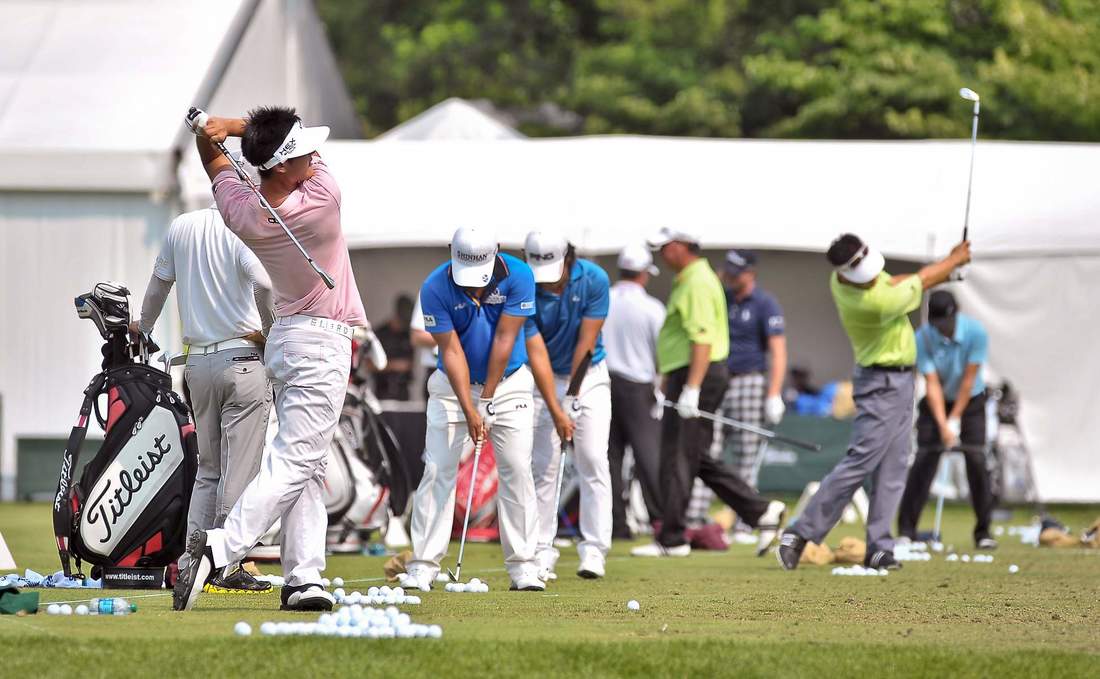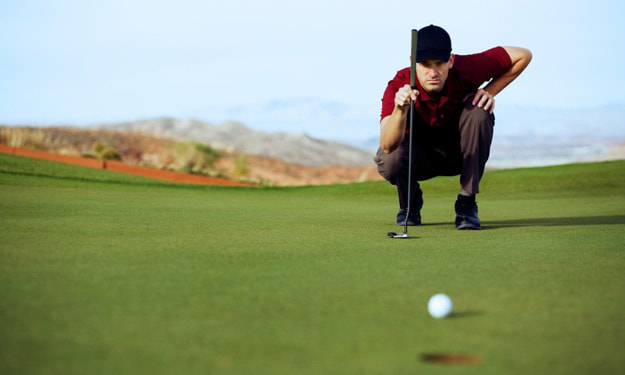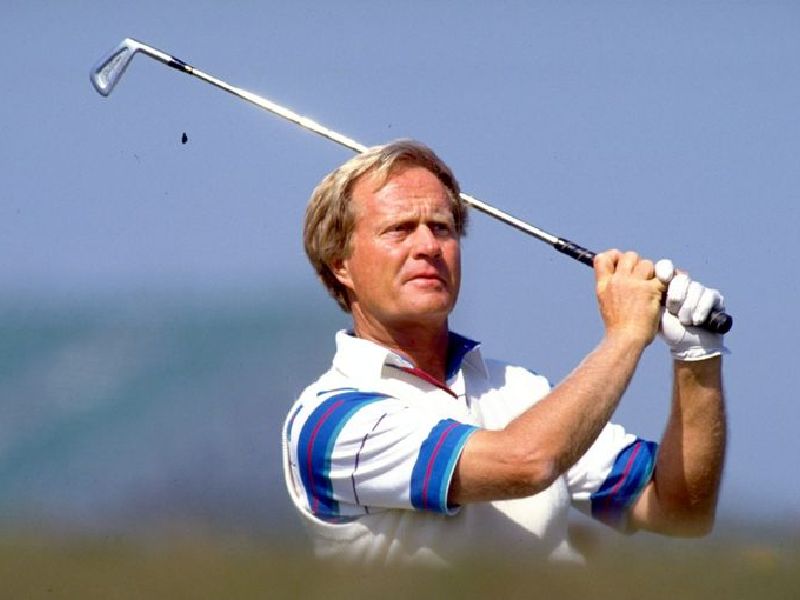|
The reality of playing golf on tour is that you are always searching for a competitive edge over the golf course you're playing and ultimately your opponents. This doesn't really make it that different from any other stick and ball sport, where a score is involved, except for one important qualification; On the pro golf tour you have to shoot consistently low golf scores just to make cuts in tournaments before you can make any money. In other words you don’t get a dime for playing less than your best for four days. So every moment that you are not competing at a golf tour event somewhere, you’re on the practice fairway and practice green finding ways to sharpen, refine and develop your golfing skills in an effort to make more cuts, more money and the opportunity to play in the big league on a major golf tour. In essence you’re practicing your golf skills exclusively to perform better on the golf course" Design Your Golf Practice You practice so you can become so skilled at playing golf, that you make a lot more cuts than you miss - which translates into a lot more money in the bank account and the possibility of winning golf tournaments. So I‘d like to share with you a key distinction I learned about how top tour golfers practice effectively;
You must practice in such a way that there is a high probability that you will perform better on the golf course." Perfect Match Practice When you practice your golf skills you are attempting to modify or adjust an aspect of your physical behaviour by conditioning a new set of behaviours that you can rely on when it really counts, through a large quantity of highly focused repetition. I’m sure that you can see that this shouldn’t be taken lightly? You need to be absolutely sure that the information you’re using is the perfect match for your particular problem. Also you cannot improve your skill set if you’re dividing your attention between trying to perfect a particular movement and also trying to hit your shot to a target on the golf range. The Golf Practice Multi-tasking Myth In the workplace this would be called multi-tasking, and a raft of recent research shows that splitting your attention between tasks significantly reduces your effectiveness to perform optimally in the different tasks you’re focusing on. “It is a myth to think you can work on improving some aspect of your golf swing whilst at the same time you’re trying to hit your golf ball to a target.” But this is precisely what the vast majority of amateur golfers do.
Relevance then Repetition When I played golf on tour I discovered that golf practice was really about continually finding ways to improve my bottom line results. You are always zeroing in on the ideal practice method or drill because you’re travelling continually, and you need to make sure that the time you invest in your improvement is highly specific and manageable. So it’s not unusual to see a professional golfer working on one particular drill for a year or more. Since any physical change requires literally thousands of repetitions in order to build up sufficient memory, changing a weak skill requires a pro tour player to practice the drill whenever he/she gets the opportunity – which is often. They will practice with a ball and without a ball, and they will practice in front of mirrors in their hotel room or windows at the airport; literally anywhere they can perform the practice task that leads them to a new and desired behaviour. When they practice, they practice with a level of intensity that closely matches or simulates a real competitive situation. Practice Like it Matters “Perfect practice makes perfect” is a common cliché in sports, business and life but doesn’t really describe at all what perfect practice is, which just makes it easier for most golfers to perform “practice” without the “perfect” part. I believe that the ‘perfect’ component is to perform your golf practice with a level of intensity that closely matches or simulates a real competitive situation." This means that you make sure that the entire practice routine is exactly the same routine you use when you play on the golf course. Instead of mindlessly blasting away at golf ball after golf ball you thoughtfully and carefully practice each stroke like nothing else in the world matters as much. I have observed this first hand with some of the greatest golfers in the world.
Where I observed other professionals chatting away with their friends on the range, Jack Nicklaus seemed to me to be the one serious figure, who although very pleasant when someone acknowledged him, was there for a very specific purpose, he was there to prepare to perform to the best of his ability. Golf Practice is Not a Social Experience He was not there for a social engagement he was there to work at his craft so he could take it to the course and perform. Golf practice is not a social experience, its work and you’re there solely to improve your performances on the golf course, so you never have enough time to waste on idle chit-chat. This is where I learned an important lesson about practicing like it matters. Never waste my time, never waste a golf shot and make sure that the shot is executed to the best of my ability with my full attention on it. The next time you decide to go to the range to work on your game, consider that you have a marvellous opportunity to start practicing with real purpose. You can design your golf practice so that it’s highly specific, highly engaging and highly repeatable and you’ll discover that this shift in the way you go about performing your practice will build a strong and reliable bridge between practicing on the range and performing on the golf course when it really counts. Good golfing - Pro Tour Golf College
Scott Lieber
17/3/2018 11:16:16 pm
Wonderful article. A must read for anyone wanting to perform better in tournaments or friendly matches. This cuts through to the heart of the matter. Shooting lower scores. Well done Pro Tour Golf College Comments are closed.
|
Archives
June 2019
|
Proudly Supported By
Copyright © 2011 - 2018 Pro Tour Golf College
Website Managed By Golf Performance Media
All Rights Reserved
Website Managed By Golf Performance Media
All Rights Reserved






 RSS Feed
RSS Feed



